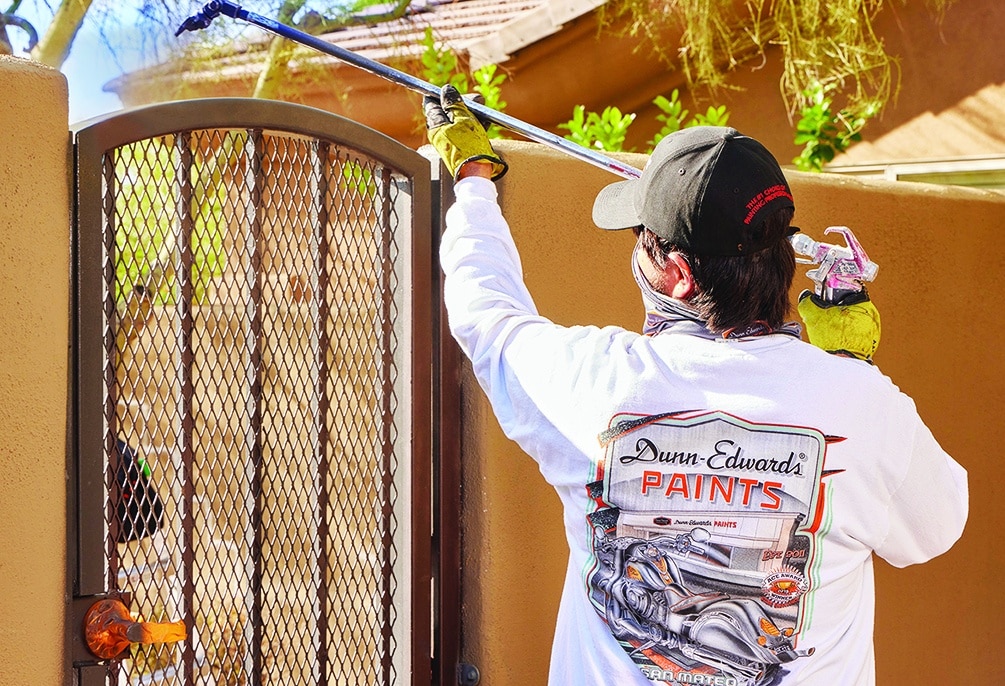Diversity in the Real Estate Industry
03/16/2021 | Dunn Edwards |
Diversity in the Real Estate Industry
According to U.S. Census data, 73% of workers in the multifamily housing industry are White,[1] with the majority of them male. That is a far cry from reflecting the diversity of the renters they serve--with nearly half of all renters belonging to a racial or ethnic minority, and a majority of renters being female.[2]
Why is diversity important?
It enhances problem-solving.
In a nutshell, diversity means variety. Having a variety of different life experiences, levels of knowledge, problem-solving approaches, and cultural backgrounds benefits companies because it provides them with a workforce that has a greater ability to tackle challenges. When everyone who works within a company has had the same life experiences and shares the same way of looking at things, everybody tends to see the same solution to every problem. But every problem has more than one solution, and a lack of diversity means that your team is severely limited in their problem-solving capabilities.
Think of it this way: if the only paint color you have available is white, you're going to end up painting every part of every property white. But what if you had a full spectrum of color to use? You might paint some rooms white, but some exterior walls might become green or brown in order to blend in with their natural environment. Parking spaces might be painted yellow visibility, and communal spaces might be painted blue to promote cooperation and harmony. Including more diversity on your team is just like adding more colors to your properties.
It reduces vacancies and boosts customer service.
Increasing talent diversity can also help companies better attract and serve renters. According to Zillow, 61% of potential renters feel it is important to meet the property manager or landlord before making a lease decision.[3] Because the typical renter contacts an average of five property managers before making a decision, these types of first impressions matter. Property managers not only have to convince renters that they have the best property, they also need to ensure that prospective tenants feel comfortable and welcome renting from THEM. According to neuroscientists, all people have an unconscious bias that makes us feel safer around people who look or sound more like us.[4] So if everyone on your team looks and sounds the same, you're potentially turning away more than half of your tenant prospects.
It is more profitable.
Actively trying to have a more inclusive and diverse team on your payroll is more than just a feel-good thing to do. It turns out that having a more diverse workforce is actually more profitable too.
- Gender Diversity: Companies with more gender diversity are 21% more likely to be more profitable.[5]
- Age Diversity: Older employees have more experience and younger ones have more tech know-how. Often, they can learn from each other.
- Racial Diversity: Companies with more racial and ethnic diversity are 33% more likely to be more profitable.[6]
- Cash Flow: More diverse companies have 2.3X more cash flow per employee than non-diverse companies.[7]
- Innovation: When employees feel included, there’s an 83% increase in their ability to innovate.[8]
- Retention: Employee turnover rate in the multifamily sector is 33%, more than 8X the US average.[9] Studies show that helping diverse employees feel more included can lessen the turnover rate.[10]
Achieving diversity is just the beginning.
Although many real estate organizations are making efforts to hire a more diverse workforce, the story doesn't––and shouldn't––end there. Once a diverse team of candidates is hired, efforts must be made to ensure that all employees feel welcomed and included.
Inclusion encourages everyone to perform at their highest level. Neurological research shows that feelings of inclusion promote the secretion of hormones that drive greater collaboration, innovation, and productivity.[11] But employees who represent minority demographics often feel excluded––unless efforts are made to counteract a company's inherent systemic and cultural biases. Most of these biases are subconscious, so it takes a conscious effort to identify and rectify them.
While making the types of company cultural shifts that drive a greater sense of inclusion is different for every organization, it begins with a commitment at the top. Once the commitment has been made, companies should conduct a self-audit to see where they stand in relation to where they want to be. Have a dialogue with employees, especially the ones who represent minorities within the company––ask them what they need in order to feel included, and then listen. Identify company policies and practices that need to change in order to address their stated needs, and be careful not to skew it through the interpretation of what YOU think your employees need.
For more information on how to create a more inclusive environment, check out these helpful resources:
Association Forum's Welcoming Environment Resource
6 Steps for Building an Inclusive Workplace by the Society for Human Resource Management
Diversity & Inclusion Survey and forms by Chapman & Co. Leadership Institute
[1] https://www.realpage.com/blog/striving-for-high-pe...
[2] https://www.zillow.com/research/zillow-group-repor...
[3] https://www.zillow.com/research/zillow-group-repor...
[4] https://www.workhuman.com/resources/globoforce-blo...
[5] https://www.mckinsey.com/~/media/mckinsey/business...
[6] https://www.mckinsey.com/~/media/mckinsey/business...
[7] https://joshbersin.com/2015/12/why-diversity-and-i...
[8] https://www2.deloitte.com/content/dam/Deloitte/au/Documents/human-capital/deloitte-au-hc-diversity-inclusion-soup-0513.pdf
[9] https://www.realpage.com/blog/striving-for-high-pe...














